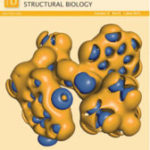VEGA 2/0148/14
Structure-function relationships of the ryanodine receptor
Principal Investigator: Alexandra ZahradníkováDuration: January 2014 – December 2016
|
Annotation:Correct functioning of ryanodine receptors (RyRs) is crucial for proper myocardial function. Ryanodine receptors maintain calcium homeostasis by regulation of diastolic calcium leak, and ensure proper extent of contraction by regulation of calcium-induced calcium release during the systole. In civilization diseases of the heart and in some inherited arrhythmias, RyR function is disturbed as a result changed phosphorylation, redox state, or RyR mutations, which leads to decreased contraction and increase of diastolic calcium release. The structure-function relationships of RyR from the viewpoint of regulation of its activity are not well understood. In this project we will focus on deciphering modulation of RyR activity at the level of single channels, dyadic channel complexes, and isolated cardiac myocytes. The results will enable deeper understanding of the mechanisms that govern RyR activity during systole and diastole. |
Keywords:calcium homeostasis, calcium signaling, ryanodine receptor, patch clamp, confocal microscopy, planar lipid bilayers, mathematical modelling, bioinformatics |
Objectives:The overall objective of the project is to characterize the mechanisms of regulation of the activity of the ryanodine receptor during systole as well as diastole and the consequences of their defects in cardiac diseases. The specific aims to reach this goal are:
|
Publications: |
| Faltinova A, Tomaskova N, Antalik M, Sevcik J, Zahradnikova A (2017). The N-terminal region of the ryanodine receptor affects channel activation. Front Physiol 8: 443. | |
 |
Petrovic P, Valent I, Cocherova E, Pavelkova J, Zahradnikova A (2015): Ryanodine receptor gating controls generation of diastolic calcium waves in cardiac myocytes. J Gen Physiol 145: 489-511. |
 |
Borko L, Bauerova-Hlinkova V, Hostinova E, Gasparik J, Beck K, Lai FA, Zahradnikova A, Sevcik J (2014): Structural insights into the human RyR2 N-terminal region involved in cardiac arrhythmias. Acta Cryst D70: 2897–2912. |

 contact
contact
